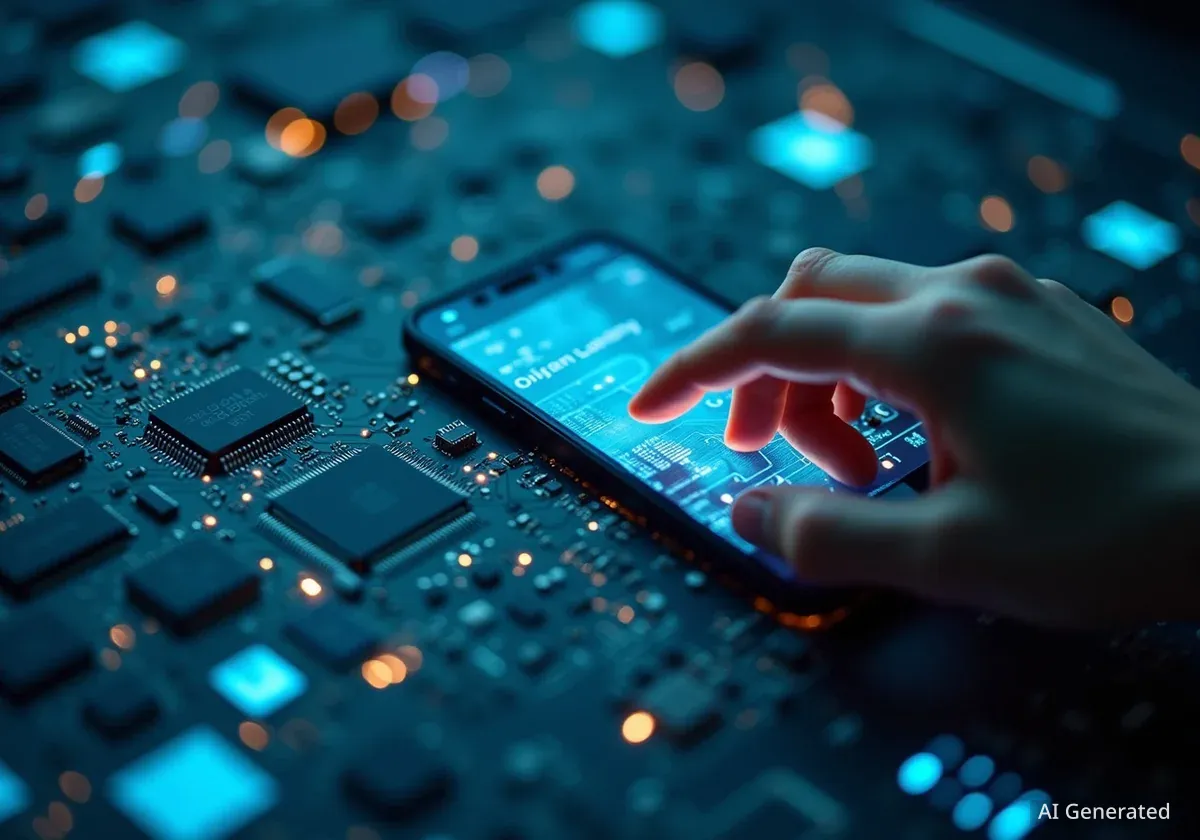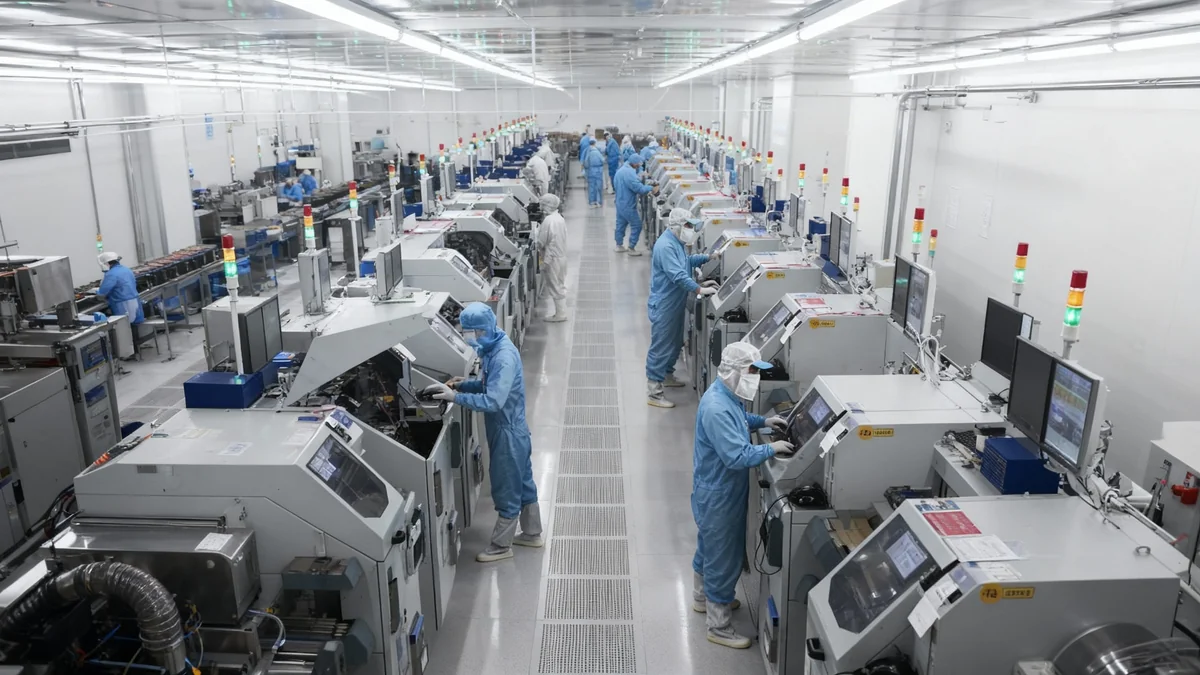The global technology sector is navigating a period of significant change, defined by an intense race for artificial intelligence dominance, mounting regulatory pressures, and an ongoing debate over user control and product choice. Major corporations like Meta and Apple are pushing the boundaries of AI, while companies such as DJI face geopolitical hurdles. Simultaneously, fundamental questions about user experience, from device maintenance to operating system choice, continue to shape the consumer landscape.
Key Takeaways
- Meta has launched "Vibes," a platform for AI-generated videos, which has drawn criticism for its lack of narrative depth.
- Apple is internally developing an AI application named "Veritas" to test a significant overhaul of its Siri voice assistant.
- A U.S. court ruled that drone manufacturer DJI will remain on a Pentagon list of firms with alleged ties to the Chinese military.
- The long-standing competition between iOS and Android highlights key differences in customization, hardware options, and app ecosystems.
The Accelerating Race for AI Supremacy
Technology giants are investing heavily in artificial intelligence, but their strategies for bringing these innovations to consumers vary significantly. Meta and Apple provide two distinct examples of this divergence, with one prioritizing rapid public deployment and the other focusing on internal, integrated development.
Meta's Public Experiment with 'Vibes'
Meta recently introduced "Vibes," a new feature available on its Meta AI app and website that presents users with an endless stream of short, AI-generated videos. The content is submitted by creators and can be paired with music, similar to Instagram Reels. Many of the videos are visually abstract, featuring subjects like animals in unusual settings or surreal landscapes.
While the platform showcases the technical progress of AI video generation, it has also faced criticism. Some users have described the experience as an "infinite slop machine," pointing to the lack of coherent storytelling in the short clips. The primary critique is that while the videos can be visually interesting, they often feel disconnected and fail to engage viewers on a narrative level, a key component of what has traditionally made social media compelling.
A Look Back at Social Media's Origins
According to a 2010 report on Facebook's early days, CEO Mark Zuckerberg's initial vision was not for professional networking but for creating a platform for "endless, mindless scrolling." He reportedly expressed a desire to be "the new MTV," a goal that aligns with the visual, short-form nature of platforms like Vibes.
Apple's Internal AI Development with 'Veritas'
In contrast to Meta's public-facing approach, Apple is developing its next generation of AI capabilities behind closed doors. According to a report from Bloomberg, the company has created an internal application named "Veritas." This tool functions similarly to OpenAI's ChatGPT and is being used exclusively by Apple employees to test a revamped version of Siri.
The new system powering the Siri overhaul is reportedly named "Linwood" and utilizes a combination of Apple's own large language models and technology from third-party partners. Veritas allows Apple's AI division to test features such as searching a user's personal data—including emails and music libraries—and performing in-app actions like AI-powered photo editing. This methodical, internal testing phase reflects Apple's historically cautious approach to integrating new technologies into its ecosystem, with a public release for the new Siri anticipated for March 2026.
Regulatory and Geopolitical Challenges in Tech
Beyond the race for innovation, technology companies are increasingly operating under the scrutiny of governments worldwide. National security concerns and regulatory compliance have become major factors influencing business operations, as illustrated by the recent legal challenges faced by drone manufacturer DJI.
DJI Loses Lawsuit Against U.S. Department of Defense
A recent court ruling has affirmed the U.S. Department of Defense's (DoD) decision to keep Chinese drone maker DJI on its list of companies with alleged connections to the Chinese military. The court found that the DoD had "substantial evidence" to suggest DJI contributes to China's defense industrial base. However, the court did not uphold the claim that DJI is indirectly owned by the Chinese Communist Party.
"While DJI is pleased that the Court agreed with DJI and rejected most of DoD's purported justifications for listing DJI, we are disappointed that the Court nonetheless upheld the listing," a DJI spokesperson stated. The company is currently evaluating its legal options.
Remaining on this Pentagon list has significant business implications. It prevents DJI from bidding on U.S. government contracts and may discourage American companies from partnering with them due to the increased scrutiny involved. This ruling adds to the uncertainty surrounding DJI's future in the U.S. market, as the company faces a separate national security risk assessment for its products by December 23, 2025.
Broader Implications of the Ruling
The legal challenges for DJI are part of a larger trend of heightened scrutiny of Chinese technology companies by the U.S. government. This geopolitical tension affects supply chains, market access, and international partnerships for numerous firms in the technology sector.
The Enduring Debate on User Choice and Control
At the consumer level, the battle for market share continues to be fought over user experience, ecosystem control, and product choice. The long-standing rivalry between Apple's iOS and Google's Android operating systems highlights fundamental differences in philosophy that directly impact users.
Key Differences Between iOS and Android
While both platforms have matured and now share many core features, several key distinctions remain that appeal to different types of users. These differences often center on the balance between simplicity and customization.
- Hardware Variety: Android offers a vast range of devices from numerous manufacturers, including Samsung, Google, and OnePlus, at various price points. This includes unique form factors like foldable phones, which are not yet available from Apple.
- Customization: Android allows for a greater degree of personalization. Users can install third-party launchers to completely change the look and feel of their home screen and app drawer, use custom icon packs, and create unique widgets.
- App Ecosystem: While Apple has recently opened its ecosystem to third-party app stores in the EU, Android has historically offered more flexibility, including the ability to install apps from outside the official Google Play Store.
- File Management: Android devices function more like traditional external storage when connected to a computer, allowing for simple drag-and-drop file management without the need for special software.
Practical Device Management for iPhone Users
For users within Apple's ecosystem, maintaining device performance often involves managing storage and temporary data. Over time, an iPhone's cache—a storage reserve for temporary files from apps and web browsing—can accumulate and occupy significant space.
Clearing this data can sometimes improve performance. There are two primary methods for managing this on an iPhone:
- Clearing Safari Cache: This can be done within the Safari browser's settings by accessing the history and website data options and choosing to clear it.
- Managing App Cache: iOS does not provide a single button to clear all app caches. The primary method is to "Offload App" via the iPhone Storage settings. This action removes the app but keeps its documents and data, freeing up the space the app itself occupied. Reinstalling the app restores it. For a complete reset, deleting and reinstalling the app is necessary.
These management tasks, while straightforward, underscore the controlled nature of the iOS environment, which contrasts with the greater system-level access often available on Android devices. This fundamental difference in philosophy continues to be a defining factor for consumers choosing their next smartphone.





